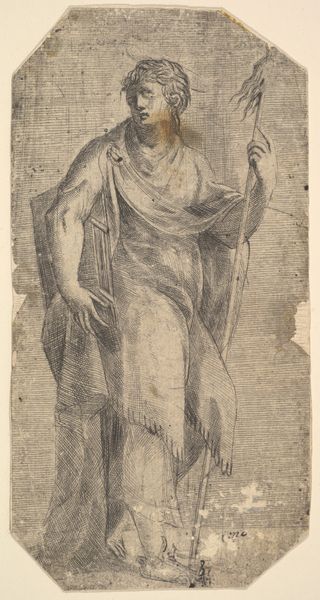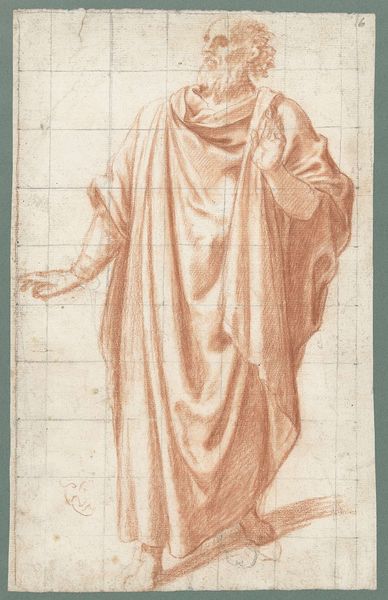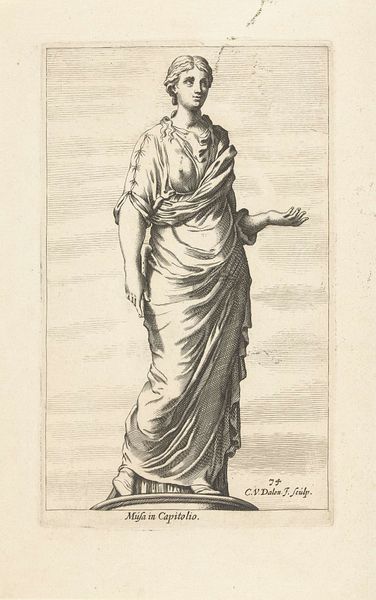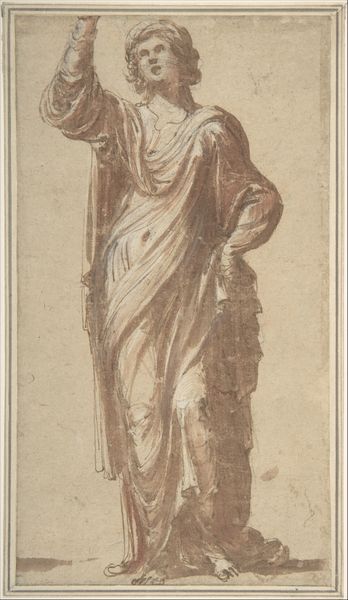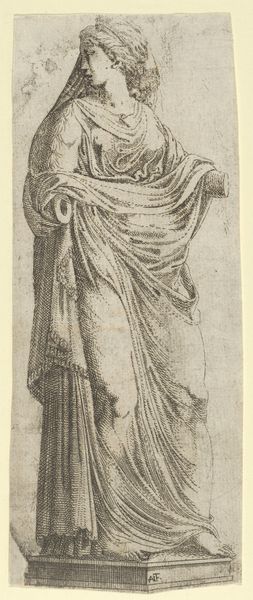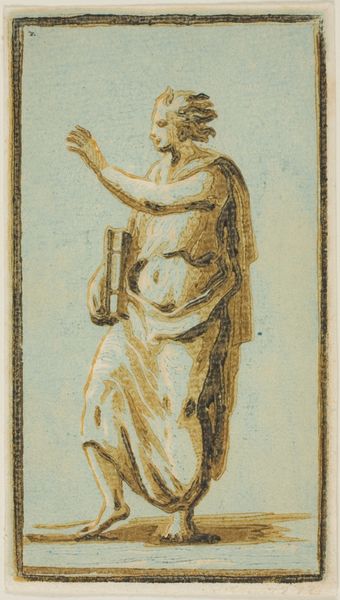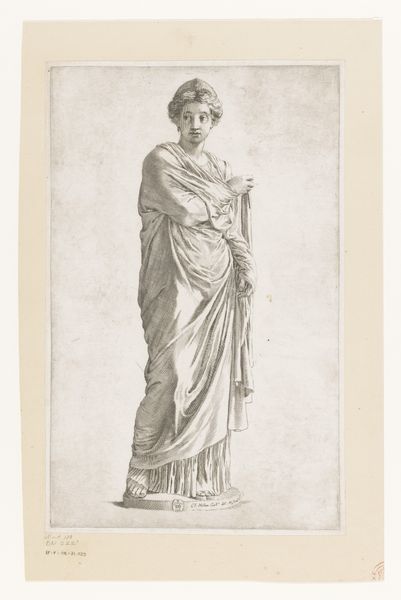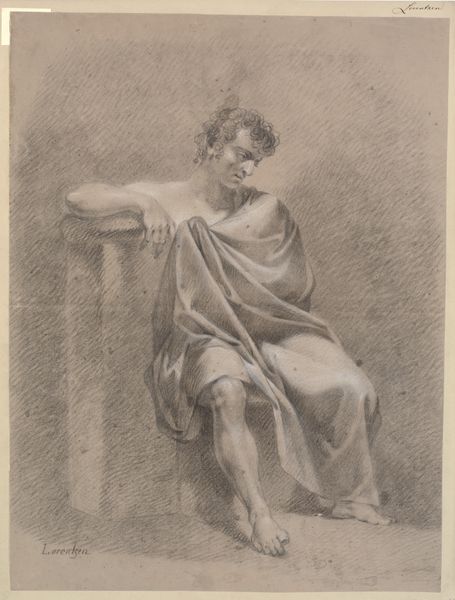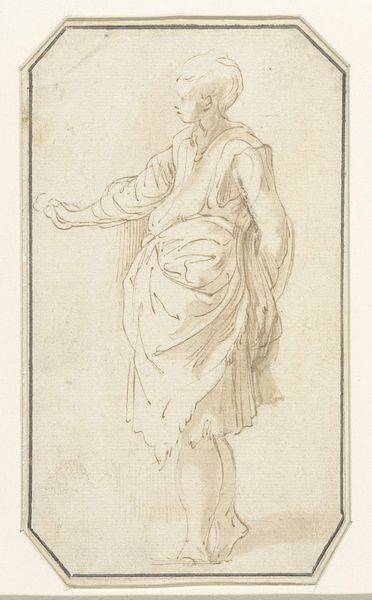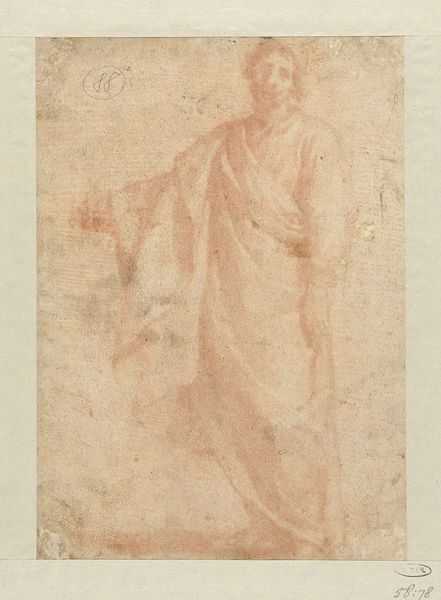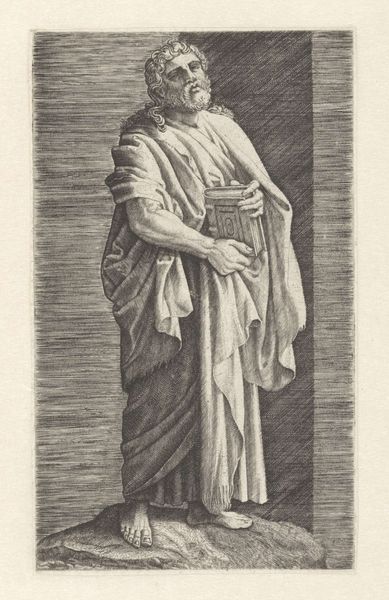
drawing, paper, ink
#
portrait
#
drawing
#
baroque
#
figuration
#
paper
#
ink
#
academic-art
Dimensions: height 151 mm, width 86 mm
Copyright: Rijks Museum: Open Domain
Augustinus Terwesten created this pen and brown ink drawing of ‘Urania op het Capitool’ during his time in Rome. Urania, the muse of astronomy, stands as a symbol deeply embedded in the cultural and intellectual climate of the 17th century. The choice of a classical subject reflects the period's fascination with antiquity, as seen through the lens of the art institutions of Terwesten’s time. The presence of Urania on the Capitoline Hill connects her to the center of Roman political and religious life. In that time, the Roman art world, with its academies and patronage systems, played a crucial role in shaping artistic careers. Artists often looked to the past for inspiration, but they also engaged with contemporary social and intellectual currents. Terwesten’s work reflects an effort to reconcile classical ideals with his own cultural context. To fully grasp the significance of this drawing, we might investigate the artist's biography and the cultural institutions in which he operated. Art history is, in many respects, a history of cultural exchange.
Comments
No comments
Be the first to comment and join the conversation on the ultimate creative platform.
